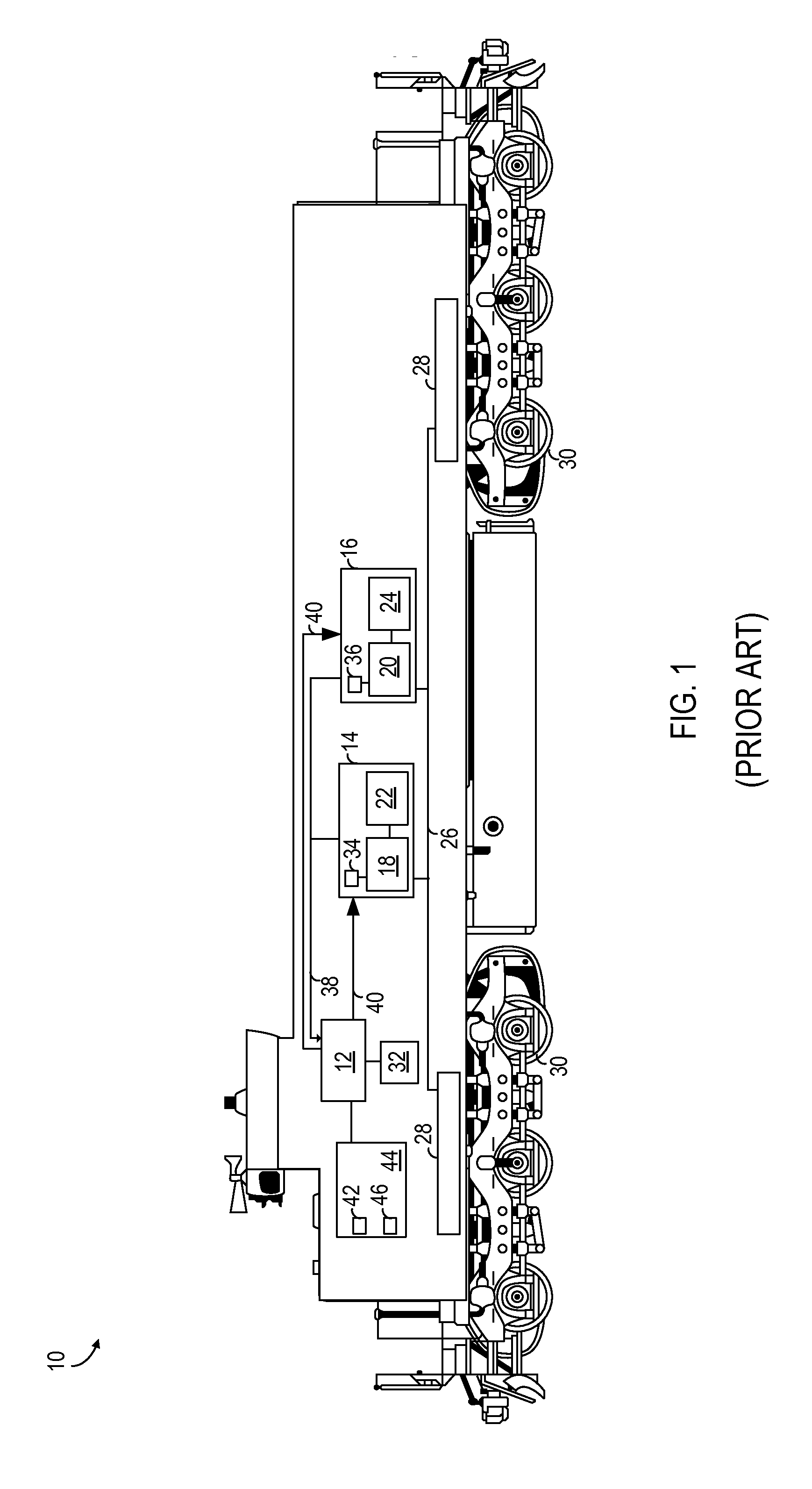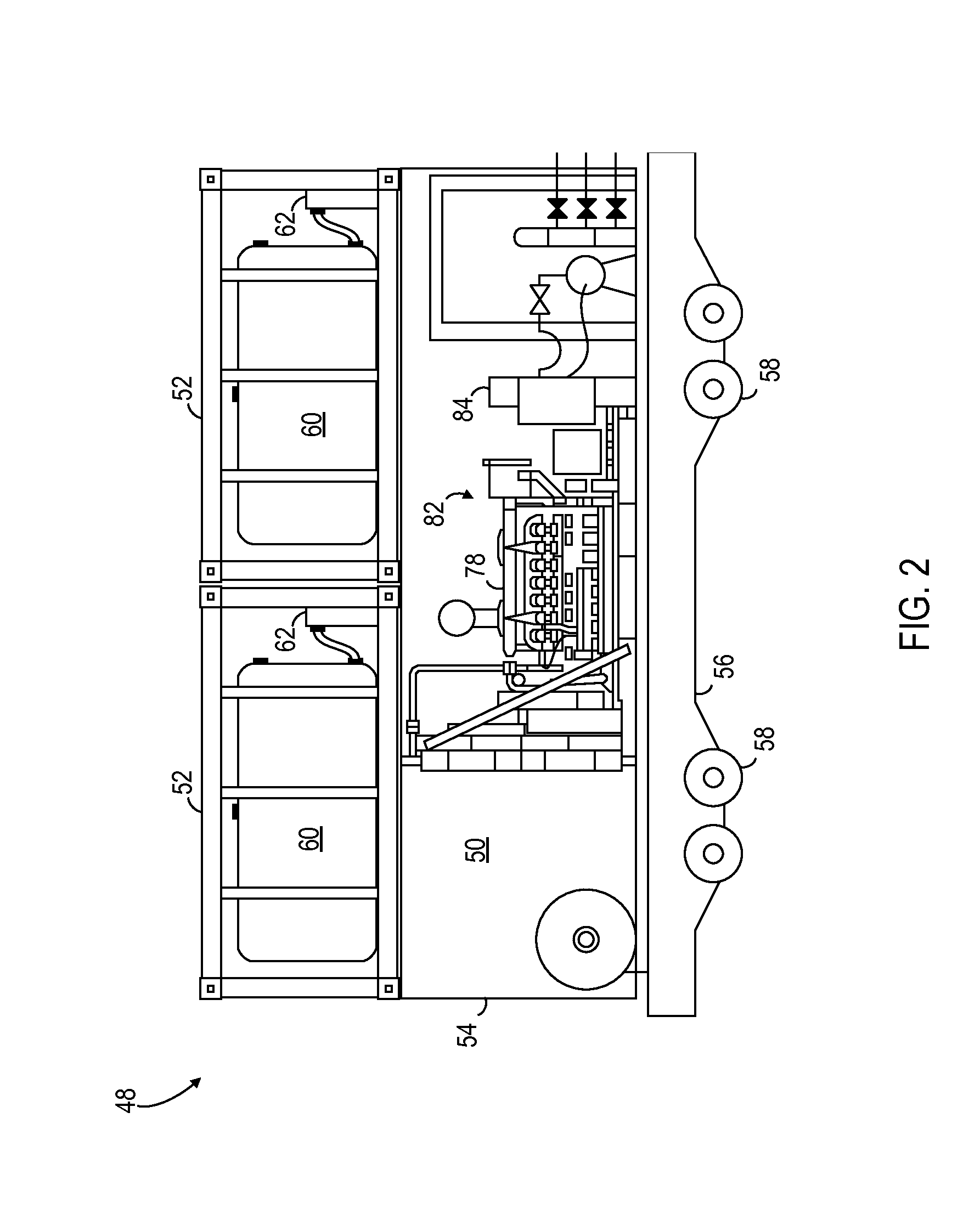Fuel tank assembly and method of use
a fuel tank and assembly technology, applied in the direction of vehicle position/course/altitude control, process and machine control, instruments, etc., can solve the problems of limited utility of approaches, general non-practice, and failure to achieve static arrangements
- Summary
- Abstract
- Description
- Claims
- Application Information
AI Technical Summary
Benefits of technology
Problems solved by technology
Method used
Image
Examples
Embodiment Construction
[0054]Auxiliary power arrangements set forth herein permit the provision of additional power to a locomotive over the amount of power that can be produced by the engine / generator combination(s) that are part of the diesel locomotive. In some operational situations, such as when the locomotive consist is running at higher speeds, the pulling capacity of the locomotive is limited by the amount of power that can be provided by the locomotives to their traction motors. The use auxiliary power permits the locomotive to move the train to greater speeds.
[0055]Embodiments of the described systems and methods also support the concept of power arbitrage between differently fueled locomotive power sources, where the arbitrage is made based upon cost of fuel or the cost of delivered power vs. the power needs of locomotive traction and auxiliary loads.
[0056]Still further, embodiments of the described systems and methods enable a metering-based power delivery approach, where the locomotive power ...
PUM
 Login to View More
Login to View More Abstract
Description
Claims
Application Information
 Login to View More
Login to View More - R&D
- Intellectual Property
- Life Sciences
- Materials
- Tech Scout
- Unparalleled Data Quality
- Higher Quality Content
- 60% Fewer Hallucinations
Browse by: Latest US Patents, China's latest patents, Technical Efficacy Thesaurus, Application Domain, Technology Topic, Popular Technical Reports.
© 2025 PatSnap. All rights reserved.Legal|Privacy policy|Modern Slavery Act Transparency Statement|Sitemap|About US| Contact US: help@patsnap.com



